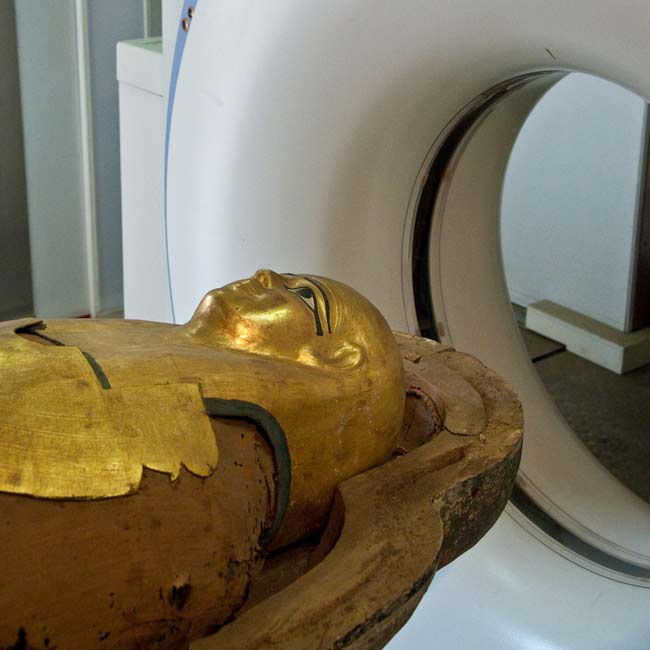Heart Disease Found in Ancient Mummies

Scientists have uncovered heart disease in 3,500-year-old Egyptian mummies, suggesting the risk factors behind it are not just modern in nature.
Heart disease is often ascribed to modern risk factors, such as smoking, unhealthy diets rich in saturated fats, salt and processed sugars, or sedentary lifestyles. But then cardiologists touring the Egyptian National Museum of Antiquities in Cairo during a medical conference last year noticed the nameplate of the pharoah Merenptah, who ruled from 1213 B.C. to 1203 B.C. It read that when Merenptah died at roughly age 60, he was afflicted with atherosclerosis, or thickening of the arteries due to buildup of calcium, fat, cholesterol and other substances.
To investigate how widespread heart disease might have been in ancient times, a team of U.S. and Egyptian cardiologists joined by experts in Egyptology and preservation CAT scanned 22 mummies dating from 1981 B.C. to A.D. 334 housed in the Egyptian National Museum of Antiquities.
Evidence of cardiac tissue or blood vessels was detected in 16 of the mummies, and the heart could even be identified in four of them. Atherosclerosis was definitely seen in five mummies and probably there in four more, according to findings presented today at the Scientific Session of the American Heart Association at Orlando.
"We in effect combined the advanced technology of mummification from the ancient Egyptians — with which embalmers with very limited tools preserved tissues beautifully over the course of thousands of years — with our advanced technology of medical imaging to detect signs of atherosclerosis," researcher Michael Miyamoto, a cardiologist at the University of California at San Diego, told LiveScience. "In a real sense, this was a scientific collaboration that spanned great time and distance."
The most ancient Egyptian afflicted with atherosclerosis was Lady Rai, who lived to an estimated age of 30 to 40 around 1530 B.C. and had been the nursemaid to Queen Ahmose Nefertiti. Lady Rai lived some 300 years before the time of Moses and 200 prior to King Tut.
"While we do not know whether atherosclerosis caused the demise of any of the mummies in the study, we can confirm that the disease was present in many," said researcher Gregory Thomas of the University of California at Irvine. "The findings suggest that we may have to look beyond modern risk factors to fully understand the disease."
Sign up for the Live Science daily newsletter now
Get the world’s most fascinating discoveries delivered straight to your inbox.
By demonstrating evidence of atherosclerosis in ancient peoples, "it may be that human beings may be uniquely prone to atherosclerosis, that it might be part of our genetic makeup, which reinforces the importance of constant vigilance and aggressive management of risk factors for the disease to keep it under control," Miyamoto said. "If we live long enough, we may all end up with atherosclerosis, but our individual genetic makeups and lifestyles may determine whether that atherosclerosis becomes clinically manifest."
However, "it should be noted that in general, the individuals who had the means to be mummified were generally of higher socioeconomic status," Miyamoto added. All of the 16 mummies whose identities could be determined were of high social status, generally serving in the court of the pharaoh or as priests or priestesses. Although the diet of any one mummy could not be determined, eating meat in the form of cattle, ducks and geese was not uncommon during these times.
"So it may be that some of them in life maintained some of these lifestyle factors that we think of as linked with atherosclerosis," Miyamoto said.
The researchers will detail their findings in the Nov. 18 issue of the Journal of the American Medical Association.
- Gallery: Amazing Egyptian Discoveries
- History's Most Overlooked Mysteries
- The Scence of Mummies











